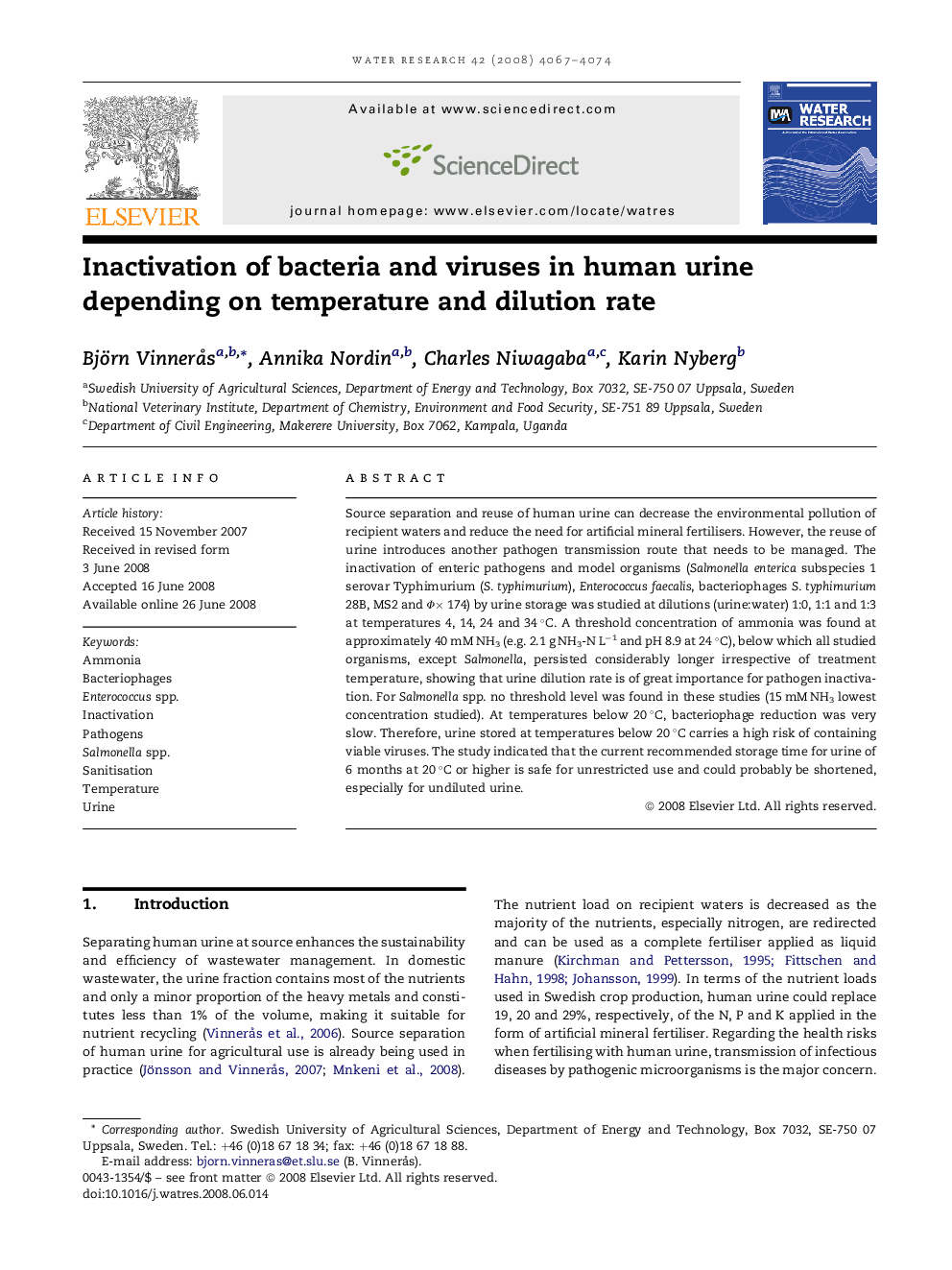| Article ID | Journal | Published Year | Pages | File Type |
|---|---|---|---|---|
| 4484804 | Water Research | 2008 | 8 Pages |
Source separation and reuse of human urine can decrease the environmental pollution of recipient waters and reduce the need for artificial mineral fertilisers. However, the reuse of urine introduces another pathogen transmission route that needs to be managed. The inactivation of enteric pathogens and model organisms (Salmonella enterica subspecies 1 serovar Typhimurium (S. typhimurium), Enterococcus faecalis, bacteriophages S. typhimurium 28B, MS2 and Φ× 174) by urine storage was studied at dilutions (urine:water) 1:0, 1:1 and 1:3 at temperatures 4, 14, 24 and 34 °C. A threshold concentration of ammonia was found at approximately 40 mM NH3 (e.g. 2.1 g NH3-N L−1 and pH 8.9 at 24 °C), below which all studied organisms, except Salmonella, persisted considerably longer irrespective of treatment temperature, showing that urine dilution rate is of great importance for pathogen inactivation. For Salmonella spp. no threshold level was found in these studies (15 mM NH3 lowest concentration studied). At temperatures below 20 °C, bacteriophage reduction was very slow. Therefore, urine stored at temperatures below 20 °C carries a high risk of containing viable viruses. The study indicated that the current recommended storage time for urine of 6 months at 20 °C or higher is safe for unrestricted use and could probably be shortened, especially for undiluted urine.
